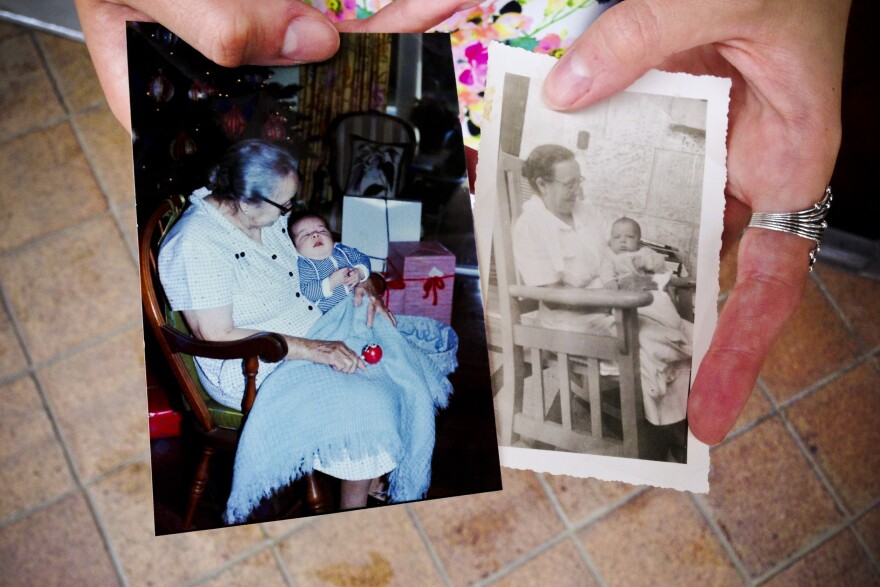Ropa vieja literally means “old clothes.” It’s not the most appetizing name for food, but it fits the dish, a type of beef stew, pretty well. For me, ropa vieja really IS like old clothes—familiar and used endlessly, and comfortable for those very two reasons. It is the dish I grew up with, being the meal my mom best knows how to cook.
This summer, I asked my mom to teach me how to cook the classic dish so I can bring the flavors of home back to college in Washington, D.C. Although I was never quite homesick at school my first year, I did miss the one thing that really reminds me of home, family and South Florida: Cuban food.
RELATED: Submit Your Favorite Stories, Recipes For #CubanKitchen
When I eat Cuban food, I get the same feeling as listening to a song that I haven't heard in years. The experience brings back memories and emotions I had long ago.
These memories include dinner table stories about a woman named Cuca. I know that's not the most polite word in some countries, but that's what my great uncle called her as a baby when he couldn't pronounce her name -- and it stuck. Cuca was a Spanish woman who had been a part of my father’s family as a nanny, a cook and basically a family member from the early 1940s until the early 1990s, when she died just before I was born. She taught my mom how to cook Cuban food.

Her cooking and recipe for ropa vieja have been ever-present in my family, from Spanish class food demonstrations in middle school to Christmas dinners.
“I think it sort of came naturally to her. I don’t think she ever used a recipe,” said my aunt, whom I call Tia Elena. “She’d throw everything in, and if she was missing ingredients, she wouldn’t care. She’d make up for it by throwing other things in, and it was great.”
Cuca just added a dash of this and a dash of that. She learned by watching others cook, and my mom learned by watching her.
“Without her I would not have learned to be the cook that I am,” my mom said. “[It] means everything to me.”
So I set a date with my mom to learn to cook Cuban food in the same way she had -- by watching. In the spirit of Cuca and la cocina Cubana, all the ingredients in the “recipe” she taught me for ropa vieja are measured in two amounts: “some” and “a dash.”
Because I'm not the best at cooking by taste, I wrote down amounts found in Villapol’s Cocina Criolla to use at school.
1. Cook the “falda,” flank steak.
About 2 lbs. according to the cookbook.
Boil until it’s cooked (even the cookbook doesn’t give specific times,) then shred with fingers into strips once they've cooled.
The dish reminds me of the Christmas parties my mom would host up in Boca Raton, where she had trouble finding a grocery store that sold “falda,” so she had to settle for kosher brisket (both brisket and flank work for this recipe.)
Because none of her friends in Boca were Cuban (or spoke Spanish,) she called the ropa vieja “Cuban brisket” so people could pronounce it and have an idea of what it was.
2. Add the “sofrito.”
1 sliced onion
1 sliced green pepper
½ cup dry white wine
2 garlic cloves
1 cup tomato sauce
Sautée the onion, pepper, and garlic in olive oil. Add to the shredded meat with tomato sauce, dry white wine, and some spices. Simmer on low for about half an hour.
“Once you’ve learned the basic sofrito you can cook anything,” my mom said. “Most things in the Cuban kitchen start off with the sofrito and that’s how we’re gonna start the ropa vieja.”
As she describes the ingredients, my mouth waters.
The sofrito is what my aunt likes most about Cuca’s recipe for ropa vieja because some restaurants make the dish too greasy (lard is a favored ingredient by far too many Cuban cooks.)
“Hers was very Cuban and very tasty, but it was never floating in grease,” Tia Elena said. “Her ropa vieja was really good and the sauce was really good.”
3. Serve with a side of black beans and rice.
Garnish the ropa vieja and rice with strips of red bell pepper. Sliced banana or tostones can also be good additions on the side.
It took a while for my mom to get the whole recipe for ropa vieja. She says it took her almost five years just to get the complete instructions for black beans from Cuca, but my mom does tend to exaggerate.
“Cuca always left out a little bit of the recipe,” she said. “It was her little secret. She would always say, ay, se me olvidó… We all concluded that it was really on purpose. She just didn’t want anyone else to get it exactly like hers.”
This post is part of our Cuban Kitchen project. What are your favorite memories of being in, around, or inspired by a Cuban kitchen? Tell us what made them special click here. Or share your stories with us on Twitter or Facebook with the hashtag #CubanKitchen.





